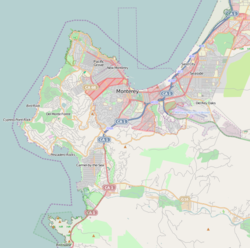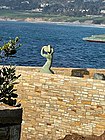
Carmel-by-the-Sea, commonly known simply as Carmel, is a city in Monterey County, California, located on the Central Coast of California. As of the 2020 census, the town had a total population of 3,220, down from 3,722 at the 2010 census. Situated on the Monterey Peninsula, Carmel is a popular tourist destination, known for its natural scenery and rich artistic history.

Carmel Highlands is an unincorporated community in Monterey County, California, United States. It is 3.5 miles (5.6 km) south of Carmel-by-the-Sea, at an elevation of 318 feet. Carmel Highlands is just south of the Point Lobos State Reserve, and serves as the northern gateway of the Big Sur coastline along California State Route 1. Carmel Highlands was laid out in 1916 by developers Frank Hubbard Powers and James Franklin Devendorf and the Carmel Development Company.
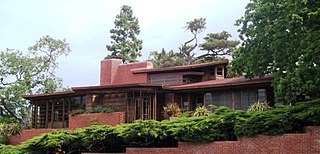
The Hanna–Honeycomb House, also known as simply the Hanna House, located on the Stanford University campus in Stanford, California, United States, was Frank Lloyd Wright's first work in the Bay Area and his first work with non-rectangular structures. The house was chosen by the American Institute of Architects as one of seventeen buildings by the architect to be retained as an example of his contribution to American culture. It was recognized as a National Historic Landmark on June 29, 1989.
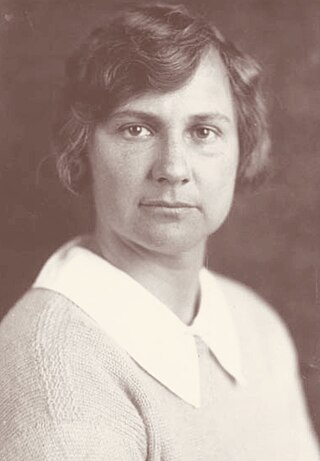
Marion B. Hollins was an American amateur golfer. She is known as an athlete and as a golf course developer, one of the only known female golf course developers in history. She won the 1921 U.S. Women's Amateur and was runner-up in 1913. She also had many other amateur wins. She was the captain of the first U.S. Curtis Cup team in 1932.
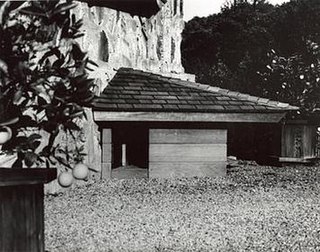
Eddie's House was a doghouse designed by Frank Lloyd Wright for the Berger family of San Anselmo, California, to be used by their dog Eddie. Wright designed Eddie's House to be in keeping with the family's home, known as the Robert Berger House, which he had previously designed. The plans for the doghouse were completed by Wright in 1957, and the 4 sq ft (0.37 m2) triangular house was built in 1963. In 1973 Eddie's House was removed and thrown away, but in 2010 Jim and Eric Berger, sons of Robert Berger, rebuilt Eddie's House from the original plans for a segment in Romanza, a documentary film by Michael Miner about Frank Lloyd Wright's architectural works in California. The doghouse remains the smallest structure Frank Lloyd Wright ever designed.

The Sidney Bazett House, also known as the Bazett-Frank House, is a Usonian-style home on 101 Reservoir Road in Hillsborough, California, United States, designed in 1939 by American architect Frank Lloyd Wright. Sidney Bazett wrote to the architect that, "With even our meager artistic knowledge,... it was apparent that it would be a shame to have anyone other than Frank Lloyd Wright design our home."

Carmel Woods is an unincorporated community in Monterey County, California, United States. It is located adjoining the northern city limits of Carmel-by-the-Sea and adjacent to Pebble Beach. Carmel Woods was laid out in 1922 by developer Samuel F. B. Morse (1885-1969). It included a 25-acre (0.10 km2) subdivision with 119 building lots. Carmel Woods was one of three major land developments adjacent to the Carmel city limits between 1922 and 1925. The other two were the Hatton Fields, a 233 acres (94 ha) between the eastern town limit and Highway 1, and the Walker Tract to the south, which was 216 acres (87 ha) of the Martin Ranch called The Point.

The Harrison Memorial Library is a historic building designed by architect Bernard Maybeck and built by Michael J. Murphy in 1928. It houses a public library for the city of Carmel-by-the-Sea, California. The library provides books, materials and programs that support the pursuit of education, information, recreation, and culture. It includes documents about the history and development of Carmel and the Monterey Peninsula. The Harrison Memorial Library was named after California Supreme Court Justice Ralph C. Harrison. It was designated as an important commercial building in the city's Downtown Historic District Property Survey and was recorded with the Department of Parks and Recreation on November 18, 2002.

Hugh W. Comstock was an American designer and master builder who lived in Carmel-by-the-Sea, California. He and Michael J. Murphy were responsible for giving Carmel its architectural character. Comstock developed a fairy tale or storybook architectural-style that has been closely identified with Carmel. Twenty-one of his cottages remain in the area today. Comstock also created a modern use of adobe in the construction known as "Bitudobe," a type of post-adobe brick.

The Carmel Development Company was a real-estate development company that operated in Carmel-by-the-Sea, California from 1902 to 1965. It was developed by James Franklin Devendorf and Frank Hubbard Powers in 1902. Powers provided the capital and did the legal work of the corporation. Devendorf was the general manager and oversaw subdividing and developing the land. Between 1900 and 1910 the Carmel Development Company purchased parcels of land.
The following is a timeline of the history of Carmel-by-the-Sea, California, United States.
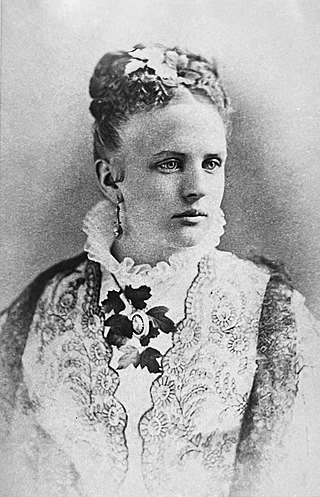
Abigail Jane Hunter, (1855–???) was as an early pioneer businesswoman, real estate developer, and visionary of Carmel-by-the-Sea. She is best known as Carmel's first woman real estate developer and important contributor in Carmel's early years. In 1889, she worked with Santiago James Duckworth to help build a Catholic summer resort called Carmel City. Hunter is credited with coining the name Carmel-by-the-Sea and utilizing it in promoting Carmel City through newspaper advertisements and postcard mailers. After an unsuccessful undertaking, she sold her Carmel holdings in 1900.

Carmel Point also known as the Point and formerly called Point Loeb and Reamer's Point, is an unincorporated community in Monterey County, California, United States. It is a cape located at the southern city limits of Carmel-by-the-Sea and offers views of Carmel Bay, the mouth of Carmel River, and Point Lobos. Carmel Point was one of three major land developments adjacent to the Carmel city limits between 1922 and 1925. The other two were Hatton Fields, 233 acres (94 ha) between the eastern town limit and Highway 1, and Carmel Woods, 125 acres (51 ha) tract on the north side.
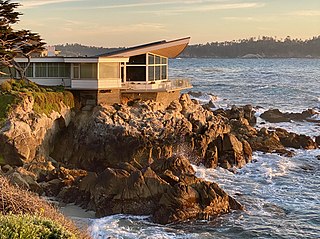
Butterfly House, is a Mid-century modern style house built in 1951 located on Carmel Point in Carmel-by-the-Sea, California. Due to its unique wing-shaped roof, this building is commonly referred to as the Butterfly House. The house was designed and built by architect Francis W. Wynkoop. It is one of the few houses that is on the rocky Carmel shoreline.

Francis W. Wynkoop, was an American architect, known for building educational school buildings in Pacific Grove and San Carlos, and oceanfront homes in Carmel Point at the southern city limits of Carmel-by-the-Sea, California. One of them is the noted Butterfly House on Scenic Drive.
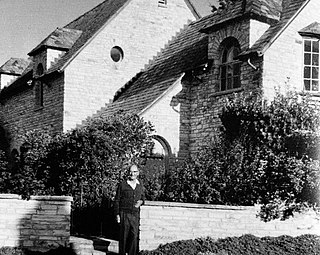
Ernest Samuel Bixler was an American master builder and designer in Carmel-by-the-Sea, California. From the 1930s to 1950s, he built over 80 homes in the Carmel area, three on Scenic Road. He served as postmaster and was a member of the Carmel Planning Commission. Bixler became known for building Spanish Eclectic-style homes.
Samuel J. Miller, also known as Sam Miller, was a builder and carpenter in Carmel-by-the-Sea, California, United States. He had an influence on the character and architecture of Carmel during his career.
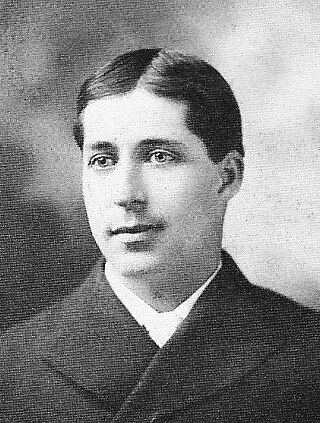
Fred Ruhl was an American master builder in Monterey County, California. He is best known for his contributions to the architecture of Pebble Beach, and Carmel-by-the-Sea, most notably for building the Flanders Mansion, listed on the National Register of Historic Places. He worked closely with architect Robert Stanton to build the Normandy Inn on Ocean Avenue in Carmel.
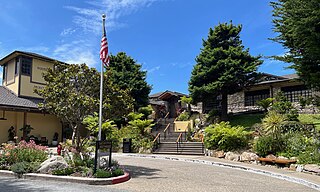
Highlands Inn is a historic resort hotel located in Carmel Highlands, California. Constructed in 1917 by Frank Devendorf, one of the early co-founders of Carmel-by-the-Sea and a real estate developer, the inn was built on land acquired in 1906 from local ranchers, south of Point Lobos. This establishment is part of the Hyatt Hotels Corporation.

